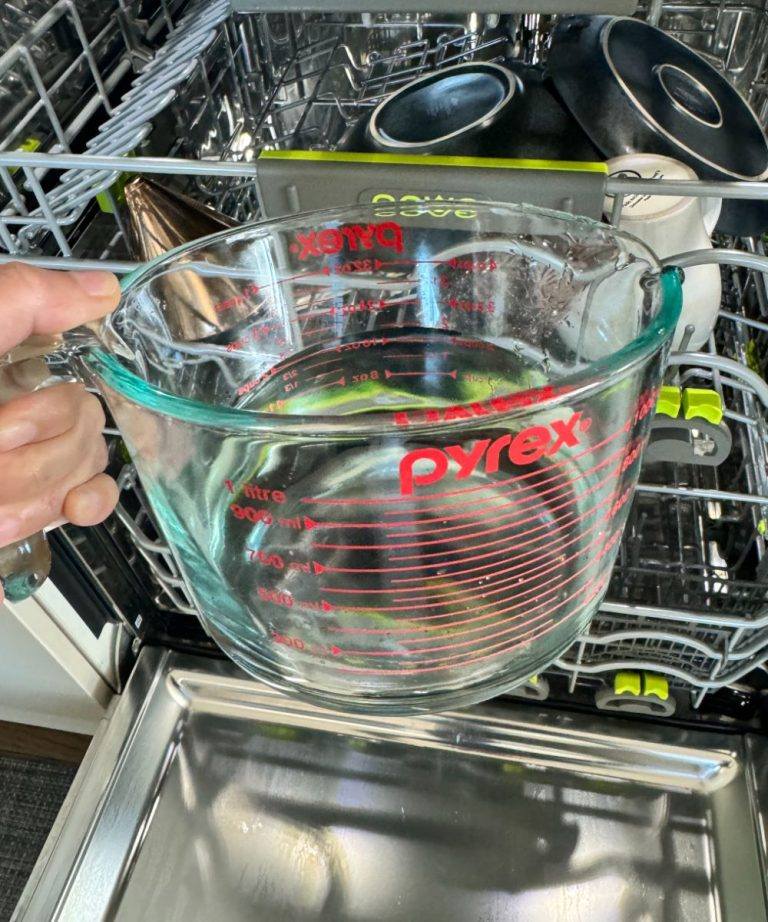ADVERTISEMENT
Most People Don’t Clean Their Dishwasher When They Should: Here Are Tips to Know When and How to Clean It Right
Dishwashers are one of the most convenient appliances in the kitchen, saving time and effort by cleaning dishes, pots, and pans with ease. But did you know that, just like any other appliance, your dishwasher needs regular cleaning to perform at its best? Unfortunately, many people forget to clean their dishwasher or don’t realize how important it is for its longevity and performance. Over time, food debris, soap scum, and mineral buildup can accumulate, leading to unpleasant odors, poor cleaning results, and even damage to your dishwasher.
In this article, we’ll walk you through when and how to clean your dishwasher to ensure it runs efficiently and keeps your dishes spotless. Let’s dive in!
Why You Should Clean Your Dishwasher
Dishwashers are constantly exposed to food particles, grease, and detergent residue. Over time, this can lead to several issues:
- Unpleasant odors: Leftover food particles can lead to mold or mildew growth, which can make your dishwasher smell musty.
- Poor cleaning performance: Buildup of grease and grime can reduce the effectiveness of the spray arms, resulting in dishes that aren’t as clean as they should be.
- Clogged filters and spray arms: Food debris can get stuck in the filters and spray arms, affecting the water flow and dishwasher performance.
- Mineral buildup: Hard water can cause mineral deposits to form on various parts of the dishwasher, leaving spots on your dishes and reducing the appliance’s efficiency.
Regular cleaning ensures that your dishwasher performs at its best, leaving your dishes sparkling clean while also prolonging the life of your appliance.
How Often Should You Clean Your Dishwasher?
While you might think that a dishwasher cleans itself with each wash, that’s not quite true. Here’s a general guide on how often you should clean your dishwasher:
- Monthly: Clean the interior, including the filter, spray arms, and door seals. This will help prevent any buildup of food particles, grime, or odors.
- Every 6 months: Run a deep clean cycle using a dishwasher cleaner or natural cleaning ingredients like vinegar. This is especially important if you live in an area with hard water, which can cause mineral deposits to form in your dishwasher.
- As needed: If you notice any unpleasant smells, reduced cleaning performance, or visible buildup, it’s time to clean your dishwasher, even if it hasn’t been a full month.
How to Clean Your Dishwasher: Step-by-Step Guide
Cleaning your dishwasher doesn’t have to be difficult. Here’s how you can clean it in a few simple steps.
1. Clean the Filter
The filter is one of the most important parts of the dishwasher to clean regularly. Food particles, grease, and debris can get caught in the filter, reducing the efficiency of your dishwasher and causing unpleasant smells.
- Locate the filter: The filter is usually located at the bottom of the dishwasher. Refer to your user manual for its exact location.
- Remove the filter: Take the filter out gently. Some filters may twist out, while others may simply lift out.
- Clean the filter: Rinse the filter under warm water, scrubbing it with a soft brush or sponge to remove any stuck-on debris. If it’s very dirty, soak it in warm soapy water for 15-20 minutes to loosen the grime.
- Reinstall the filter: Once it’s clean and dry, place the filter back into its compartment.
2. Check and Clean the Spray Arms
The spray arms are responsible for distributing water during the washing cycle. If they become clogged with food particles or mineral buildup, your dishwasher won’t clean as efficiently.
- Inspect the spray arms: Look for any visible blockages in the holes of the spray arms.
- Clean the spray arms: If necessary, remove the spray arms according to the user manual. Rinse them under warm water, using a toothpick or small brush to clear any clogs. You can also soak them in warm water with a little dish soap to loosen any grime.
- Reattach the spray arms: Once clean, reattach the spray arms securely in place.
3. Wipe Down the Door Seals
The door seals (gaskets) around your dishwasher’s door are prone to collecting moisture, food, and soap residue. If left uncleaned, this can lead to mold or mildew buildup.
- Wipe the seals: Use a damp cloth or sponge to wipe down the door seals. Pay special attention to the folds of the seals, where food particles can get trapped.
- Clean with vinegar: For stubborn grime or mold, use a mixture of equal parts vinegar and water. Spray the mixture onto the seals and let it sit for a few minutes before wiping it off.
4. Run a Cleaning Cycle
After cleaning the filter, spray arms, and door seals, it’s time to give your dishwasher a deep clean. Running a cleaning cycle will help remove any remaining debris and sanitize the interior of the dishwasher.
- Place a dishwasher-safe container of vinegar: Fill a dishwasher-safe container or cup with white vinegar and place it on the top rack of the dishwasher. The vinegar will help dissolve grease, mineral deposits, and soap scum.
- Run a hot water cycle: Run the dishwasher on its hottest setting (usually labeled as “heavy duty” or “pots and pans”). The vinegar will help remove any stubborn buildup.
- Optional: For extra freshness, you can sprinkle baking soda on the bottom of the dishwasher before running a second hot cycle. The baking soda will deodorize the interior and leave a fresh, clean scent.
- For Complete Cooking STEPS Please Head On Over To Next Page Or Open button (>) and don’t forget to SHARE with your Facebook friends
